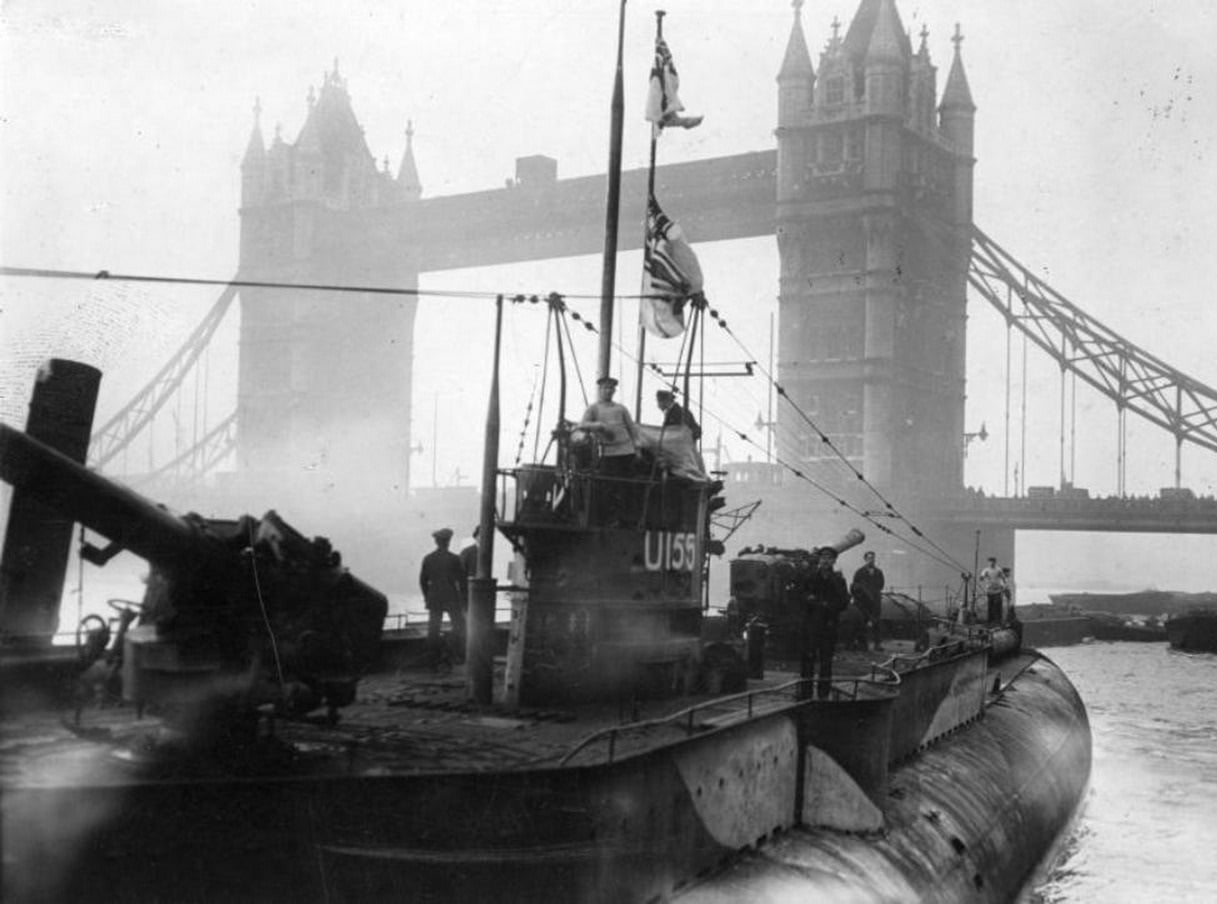Submarines showed early in their existence that they could have an outsize impact in major wars.
They were so effective that major naval powers set out to build different kinds of submarines for different missions. The Japanese even attempted to create dedicated submarine aircraft carriers.
These radical submarine designs had wide appeal but ultimately had limited utility, especially cruiser submarines.
Designed in the inter-war period, these massive subs relied just as much on large guns and turrets as they did on torpedoes.
Submersible warships
Cruiser submarines trace their origin to two models of the Imperial German Navy during World War I: the Type 151 class, which had seven subs, and the Type 139 class, which had three.
Both types had torpedo tubes — two on the Type 151s, which had storage for 18 torpedoes, and six on the Type 139s, which could store 24 torpedoes — but their primary armament were two massive 5.9-inch deck guns normally fitted on surface warships, which were located in front of and behind the coning tower.
Their massive size and displacement — about 200 feet to 300 feet long and over 2,000 tons submerged — allowed them to sail much farther than smaller submarines and without assistance.
Type 151 and 139 boats operated in the waters off the Azores, Africa, and even the East Coast of the US, sinking dozens of ships. One Type-151 boat, U-156, became the first foreign warship to shell the continental US in 70 years when it fired on a Cape Cod town in July 1918.
Conceptually, the boats functioned more like navy cruisers than true submarines — hence the name.
Cruiser submarines could patrol large areas independently for long periods of time, escort friendly vessels, ambush or engage enemy ships with guns and torpedoes, lay mines, and even conduct shore bombardment.
They also exploited an interesting loophole in the Washington Naval Treaty in 1922, in which major naval powers of the world agreed to limits on the number, weight, and caliber of most warships.
Submarines, however, were practically unregulated. Cruiser submarines, with large torpedo stores and large guns, were a way to augment the power of any surface fleet without violating the treaty.
Multiple models
All of the major naval powers built cruiser submarines in the inter-war period.
Britain’s HMS X1 had four 5.2-inch guns in two twin turrets and displaced some 3,600 tons submerged.
The Soviet Union’s 12 K-class boats were armed with two 4-inch guns, and, at 320 feet long and 2,600 tons submerged, were the largest Soviet subs until the 1950s.
Italy had two types of cruiser submarines: the Ettore Fieramosca and the four Cagni-class boats.
The Germans built some of their Type IX subs for long-range duty similar to that of cruiser submarines.
Several of the US Navy’s nine V-boats, specifically those of the Narwhal subclass, became cruiser submarines, each armed with two 6-inch guns. They saw extensive service during World War II and were perfect for inserting and supporting Marine Raiders on special operations, as well as transporting supplies to guerrillas in the Philippines.
The most well-known cruiser submarine among Western countries was France’s Surcouf. It had two 8-inch guns in a single turret and had two external swiveling torpedo mounts with three tubes each, in addition to the standard internal torpedo load. It also carried a floatplane for reconnaissance and to provide targeting.
Japan embraced cruiser submarines more than any other power. Due to the large size of the Pacific, Japan’s navy prioritized the ability to cover long distances, especially with its submarines.
The Imperial Japanese Navy had multiple classes of cruiser submarines, most notably the Type J1 and Type B1 classes. The four J1 boats had two 5.5-inch guns. The 20 B1 boats only had one gun each but were also each equipped with a floatplane.
The submarines were highly effective, particularly early in the war, when they sank multiple US ships — including the carrier USS Wasp and cruiser USS Juneau — and bombarded the US mainland on two separate missions.
Japanese cruiser subs were also effective transports, facilitating the transfer of critical technology between Nazi Germany and Imperial Japan.
Ultimately unsuccessful
Despite their long ranges and massive firepower, cruiser submarines failed to catch on.

